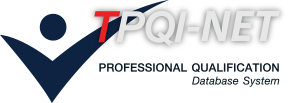หน่วยสมรรถนะ
Remove and install avionic system components.
สาขาวิชาชีพการบิน
รายละเอียดหน่วยสมรรถนะ
| 1. รหัสหน่วยสมรรถนะ | AVT-ZTLH-246A |
| 2. ชื่อหน่วยสมรรถนะ | Remove and install avionic system components. |
| 3. ทบทวนครั้งที่ | / |
| 4. สร้างใหม่ |
|
ปรับปรุง |
|
| 5. สำหรับชื่ออาชีพและรหัสอาชีพ (Occupational Classification) | |
|
7232 Aircraft engine mechanics and fitters |
|
| 6. คำอธิบายหน่วยสมรรถนะ (Description of Unit of Competency) | |
| This skill unit requires the use of workforce skills and use of maintenance documentation / publications in the certification of the avionics system components fixed wing and rotary aircraft removal, installation and during the task the execution of planned maintenance or unplanned system maintainability which can be established by a simple self-test facility, other test systems / board equipment or by the simple ramp test equipment. Maintenance can be performed individually or as part of a team. | |
| 7. สำหรับระดับคุณวุฒิ |
| 1 | 2 | 3 | 4 | 5 | 6 | 7 | 8 |
|---|---|---|---|---|---|---|---|
| 8. กลุ่มอาชีพ (Sector) | |
| 7232 Aircraft Mechanics | |
| 9. ชื่ออาชีพและรหัสอาชีพอื่นที่หน่วยสมรรถนะนี้สามารถใช้ได้ (ถ้ามี) | |
| N/A | |
| 10. ข้อกำหนดหรือกฎระเบียบที่เกี่ยวข้อง (Licensing or Regulation Related) (ถ้ามี) | |
| ICAO Doc 7192 / EASA Part 66 | |
| 11. สมรรถนะย่อยและเกณฑ์การปฏิบัติงาน (Elements and Performance Criteria) |
| หน่วยสมรรถนะย่อย (EOC) | เกณฑ์ในการปฏิบัติงาน (Performance Criteria) | รหัส PC (ตามเล่มมาตรฐาน) |
รหัส PC (จากระบบ) |
|---|---|---|---|
| 102302.01 Remove avionic system components. |
102302.01.01 System is rendered safe and prepared in accordance with the applicable maintenance manual and isolation tags are fitted, where necessary, to ensure personnel safety. Avionic component removal is carried out in accordance with the applicable maintenance manual while observing all relevant work health and safety (WHS) requirements. |
102302.01.01 | 199521 |
| 102302.01 Remove avionic system components. |
102302.01.02 Required maintenance documentation is completed and processed in accordance with standard enterprise procedures. Removed components are tagged and packaged in accordance with specified procedures. |
102302.01.02 | 199522 |
| 102302.02 Install avionic system components and verify system serviceability. |
102302.02.01 Avionic components to be installed are checked to confirm correct part numbers, modification status, serviceability and shelf life. Installation of avionic components is performed in accordance with the applicable maintenance manual and regulatory requirements while observing all relevant WHS requirements. |
102302.02.01 | 199523 |
| 102302.02 Install avionic system components and verify system serviceability. |
102302.02.02 System is reinstated to correct operational condition and is tested for serviceability. Required maintenance documentation is completed and processed in accordance with standard enterprise procedures and regulatory requirements. |
102302.02.02 | 199524 |
| 12. ความรู้และทักษะก่อนหน้าที่จำเป็น (Pre-requisite Skill & Knowledge) | |
|
103406Test and troubleshoot aircraft electrical systems and components |
|
| 13. ทักษะและความรู้ที่ต้องการ (Required Skills and Knowledge) | |
|
(ก) ความต้องการด้านทักษะ EASA Part 66: Module 5Digital Technique/Electronic Instrument Systems (ข) ความต้องการด้านความรู้ EASA Part 66: Module 5Digital Technique/Electronic Instrument Systems |
|
| 14. หลักฐานที่ต้องการ (Evidence Guide) | |
|
(a) Performance Evidence (b) Knowledge Evidence |
|
| 15. ขอบเขต (Range Statement) | |
|
This field allows for different work environments and conditions that may affect performance. Essential operating conditions that may be present (depending on the work situation, needs of the candidate, accessibility of the item, and local industry and regional contexts) are included. |
|
| 16. หน่วยสมรรถนะร่วม (ถ้ามี) | |
| N/A | |
| 17. อุตสาหกรรมร่วม/กลุ่มอาชีพร่วม (ถ้ามี) | |
| N/A | |
| 18. รายละเอียดกระบวนการและวิธีการประเมิน (Assessment Description and Procedure) | |
|
• The assessment are based on combination of paper exams, interviewing, and practical demonstrations depending on the assessors’ judgement. |
|
